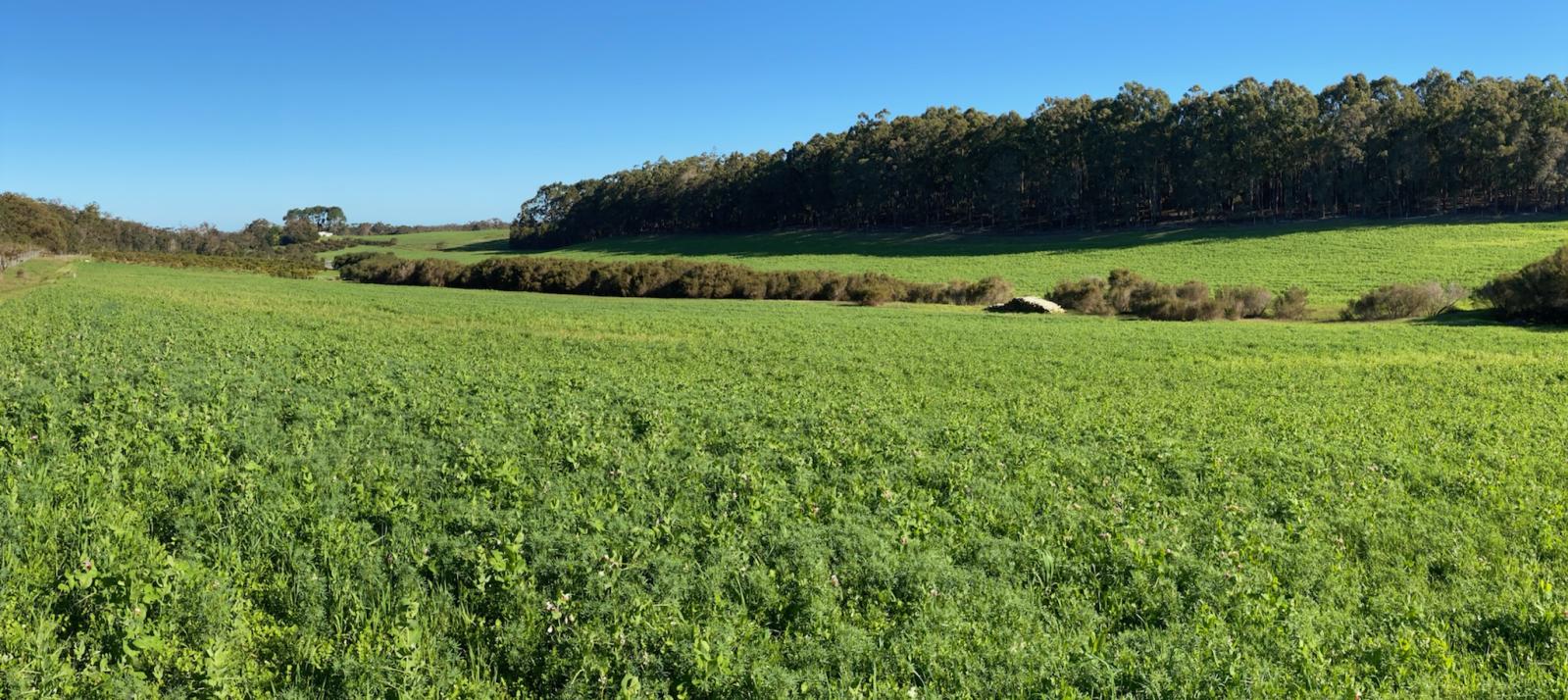
Mark Tupman
MemberForum Replies Created
-
Hi Wen,
I just read your post and would suggest that in terms of effectiveness, allowing weeds to germinate first then lightly tilling or spraying will likely be more effective than dry seeding. Dry seeding is easy and cheap and can be used when you already have a stand of good existing species, i.e perennials, in the field or if weeds aren’t likely to be a big burden. Neither of these situations applies to you at this stage.
Regards
Mark
-
Hi Brett,
Thanks for sharing.
It’s all in the timing.
Last year, the comeback of multi species plots at Nevs’ was worse in strips that were grazed a bit later, maybe because the plants had started going to seed and exhausted reserves?
On the flip side, species like chicory, plantain etc… need enough time to get established before grazing.
This year, on a property in Boddington, we went in a bit earlier (as soon as the first species started to flower) on a somewhat graze tolerant multi-species mix – forage barley, oats, serradella, chicory, plantain, clover, forage brassica ryegrass, phalaris…
Will keep you posted on how it plays out.
-
Hi Susie,
Most seaweed powders on the market are extracted with potassium hydroxide. This changes the nature of its properties somewhat unlike seaweed products that are produced mechanically or through fermentation.
The products I prefer to use for seed coating are Seaperia powder or the the fermented seaweed liquid from Marine Supplies in Fremantle.
These cost a bit more but you only need a bit for seed coating.
-
Hey Eric,
Good question.
There are a few good liquid calcium products on the market from companies like cropping solutions and sustainable farming solutions, but they are expensive. Nicole Masters recommends making whitewash with hydrated lime, other farmers are trying micronised products or using strong acids to solubilise the calcium in micronised calcium carbonate etc…
I’ve yet to see much proper research or testing on the effectiveness of these measures but a few of us have started doing some so will keep you posted.
The other thing is that you can only get so much calcium into plants via foliar sprays and it’s not mobile in the plant so can’t be redistributed. We really need to look to soil uptake for the bulk of our calcium but soil uptake can be sluggish unless there’s good biological activity, hydration etc…
Like phosphorous, it’s best applied at the beginning of the season and I think upfront Calcium is as, if not more, important than the other macro elements as it’s so important for new growth. Its pretty hard to play catch up once calcium deficiencies start to show up.
The application of slowly soluble sources like single supa, and/or gypsum at, or prior to, planting is a strategy that’s somewhat effective for meeting growing season requirements along with the usual liming required to get soil calcium levels up.
-
Hi Will,
Yes, you can and should graze it now as this will set the scene for another round of vegetative regrowth.
I would be inclined to get the animals in there with high mob density and take the whole lot down quickly, but more completely. This will make for a more even stand of regrowth. Only partially grazing the area will result in selective grazing with some species getting grazed more than others. If given the option, the animals will also tend to eat the young leaves and avoid the old leaves and stem. These things happen if you don’t have high enough mob density. This is not the best for the animals as they don’t get an adequate balance of fibre and can scour. You also end up leaving behind a large amount of older more fibrous material that only declines further with time and is not what you want in your hay.
Check out the grazing management for pasture, soil and animal health article in the knowledge bank for further clarification.
-
The addition of biochar to compost can improve the holding capacity, stability, biological status etc… of the finished product. Applying biochar enriched compost to the soil somewhat emulates the process used in the Amazon rainforests to create the rich terra preta soils that persist to this day. This could be a good practice to try in the poor sandy soils of WA.
Farmers are also making use of wood vinegar, which is a by product of biochar production, as it looks to be a promising biostimulant.
-
Mark Tupman
Member22/06/2024 at 1:52 pm in reply to: Do Annual Cover Crop Mixes Have a Place in Grazing ProgramsCover crop microbiome overwintering mentioned in this one.
https://podcasts.apple.com/au/podcast/regenerative-agriculture-podcast/id1372359995?i=1000659624439
podcasts.apple.com
Show Regenerative Agriculture Podcast, Ep Episode 122: Exploring Tillage, Aggregation, and Biological Innovation with Rick Clark - 20 June 2024
-
Mark Tupman
Member21/06/2024 at 1:00 pm in reply to: Do Annual Cover Crop Mixes Have a Place in Grazing Programs -
-
Mark Tupman
Member14/07/2025 at 2:35 pm in reply to: The Highs & Lows and Longs & Shorts of GrazingHi Doreen,
you have to click on the download icon 😏
Regards
Mark
-
Mark Tupman
Member20/10/2024 at 2:09 pm in reply to: Grazing Through Spring in a Mediterranean EnvironmentMy take is that you cant push sheep much harder at this stage Kate. It sounds like your dung scores and condition are good. The fact they are not eating as much of the forage and leaving stem material is less of an issue with annuals as there won’t be much leaf recovery from now on and the residue will provide you with some good soil cover over summer.
The one concern is that they are selectively grazing so while the animals are doing ok, you must ensure that are your better plant species aren’t being compromised. At least they’re moving often enough to avoid the second bite 👍
Higher mob density would help you achieve a more even trample effect though.
Also, it could be time to move them onto that better quality stockpile you have up your sleeve.
-
Mark Tupman
Member16/10/2024 at 3:37 pm in reply to: Grazing Through Spring in a Mediterranean EnvironmentThanks for your input Eric,
I think having well rested pastures up your sleeve ready to go at this time of year is key.
Re the utilisation, do you think the cattle do better than the sheep on high fibre forage?
-
Hi Eric,
We have got the tissue and sap results back from the strips where we applied a combination of micronised high calcium products including gypsum, vibrocalcite, guano and soft rock phosphate.
As suspected, there’s no discernible difference in the Ca levels between the treated and untreated strips 😏
-
Unless the soil is in a healthy and fertile enough state to support the plants adequately 😏


